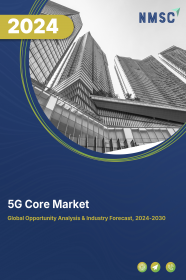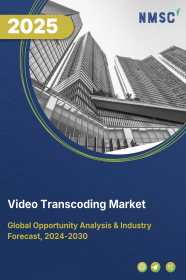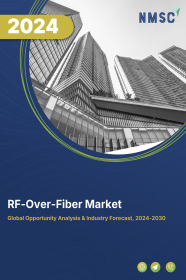
5G Core Market by Deployment Model (Cloud-based and On-premises), by Network Function (AMF (Access and Mobility Management Function), SMF (Session Management Function), UPF (User Plane Function), NRF (Network Repository Function), UDM (Unified Data Management) and UDSF (Unified Data Storage Function)), and by End User (Enterprises, Telecom Operators, and Government & Public Sector) – Global Opportunity Analysis and Industry Forecast, 2024-2030
US Tariff Impact on 5G Core Market
Trump Tariffs Are Reshaping Global Business
Market Definition
The 5G Core Market size was valued at USD 2.90 billion in 2023 and is predicted to reach USD 38.11 billion by 2030 with a CAGR of 45.9% from 2024 to 2030.
The 5G core industry includes the market for the core network infrastructure and technologies that enable the deployment and operation of 5G cellular networks. It includes the development, deployment, and management of key network functions and elements that form the backbone of 5G networks, facilitating high-speed data transmission, low-latency communication, and support for a wide range of connected devices and applications. The 5G core industry includes various players, including telecommunications equipment vendors, network operators, software providers, and service integrators, all contributing to the evolution and expansion of 5G networks to meet the growing demands of consumers, enterprises, and industries for advanced connectivity and digital services.
Market Dynamics and Trends
The growing adoption of internet of things (IoT) that are responsible for transforming various industries by connecting all types of devices, application, systems, and services requires a faster, more reliable, and secure connections, which can be provided by the 5g core networks. Thus, this is the factor expected to drive the growth of the 5g core market.
Moreover, the rising demand for 5G in data center and cloud & computing are becoming increasingly important as the industry moves towards more connected and automated processes. As a result, 5g networks are capable of providing these services with significantly lower latency than other networks such as 4g networks, which is thereby expected to create significant growth of the 5g core market.
In addition, the increasing adoption of wireless consumer electronics such as cordless phones, mobile phones, tablets, bluetooth mice, and keyboards is accelerating the growth of the 5g core market. As most of the wireless devices are embedded with 5g networks, for facilitating seamless communication and transfer data from one end to another.
However, the high infrastructure costs act as a restraining factor for the 5G core industry, limiting deployment and adoption. On the contrary, the introduction of network slicing and edge computing is expected to create ample opportunities for the next 5G core market in the coming years.
As it creates virtual networks on a single physical infrastructure. This caters to diverse needs – high bandwidth for video streaming, ultra-low latency for autonomous vehicles, and massive machine-to-machine communication for the Internet of Things (IoT). Combined with edge computing, which brings processing power closer to devices, 5G core fuel innovation across industries.
Market Segmentations and Scope of the Study
The 5g core market is segmented on the basis of deployment model, network function, deployment, end-user, and region. On the basis of deployment model, the market is separated into cloud-based and on-premises. On the basis of network function, the market is classified into AMF (Access and Mobility Management Function), SMF (Session Management Function), UPF (User Plane Function), NRF (Network Repository Function), UDM (Unified Data Management) and UDSF (Unified Data Storage Function). On the basis of end user, the market is segmented into enterprises, telecom operators, and government & public sector. Geographic breakdown and analysis of each of the aforesaid segments include regions comprising North America, Europe, Asia-Pacific, and RoW.
Geographical Analysis
North America holds the predominating share of 5G core market and is expected to continue its dominance during the forecast period. This is attributed to the factors such as increasing subscription of 5G networks in countries such as the U.S. and Canada, which are providing faster data speeds and lower latency.
According to the 5G Americas, North America leads in adopting wireless 5G connections, reaching a total of 119 million 5G and 507 million LTE connections by Q4 2022. With 5G penetration nearing 32%, the region saw a significant increase of 52 million 5G connections in the year, marking a 78% growth compared to Q4 2021.
In addition, the presence of prominent 5G core companies that are extensively working towards the advancements in this field propels the demand for the market in this region. For instance, T-Mobile collaborated with Cisco for native 5G core that expands the flexibility of the carrier’s 5G standalone (SA) core to support all of its 5G and 4G LTE traffic.
On the other hand, Asia-Pacific is expected to show a steady rise in the 5G core market due to increasing production and sale of electronic devices that has enabled consumers to access and use high-speed wireless networks, which has enabled the demand for next generation wireless communication. According to the Ministry of Industry and Information Technology, China ranks first globally in the production and sales of consumer electronics.
In addition, the favorable government initiatives and policies supporting 5G deployment drive regional dominance in the global 5G core market, with a focus on building smart cities and digital infrastructure leading to increased investment in 5G technology.
For instance, China's Digital Silk Road (DSR) initiative aims to advance smart city development by collaborating on telecommunication networks, AI, cloud computing, e-commerce, and other advanced digital technologies, showcasing the country's commitment to digital infrastructure advancement.
Competitive Landscape
Various market players operating in the Huawei Technologies Co., Ltd., Telefonaktiebolaget LM Ericsson, Nokia Corporation, ZTE Corporation, Samsung Electronics Co., Ltd., NEC Corporation, Fujitsu Limited, CommScope, Inc., Oracle Corporation., Athonet, and others. These market players continue to adopt various market development strategies including new launches to maintain their dominance in the 5G core market.
For instance, in February 2024, Samsung Electronics Co., Ltd. has announced the launch of its cloud-native Standalone (SA) Core in support of KDDI's nationwide commercial 5G SA services in Japan.
Moreover, in November 2022, Nokia Corporation launched Core Software-as-a-Service for 5G to give communication service providers (CSPs) and businesses the choice of managing the core of their networks through a highly flexible, fully automated, scalable software approach, enabling better business agility and a quicker time to value for delivering and monetizing network services.
Key Benefits
-
The 5G core market report provides the quantitative analysis of the current market and estimations from 2024 to 2030. This analysis assists in identifying the prevailing market opportunities to capitalize on.
-
The study comprises of a detailed analysis of the 5G core market trends including the current and future trends for depicting the prevalent investment pockets in the market.
-
The information related to key drivers, restraints, and opportunities and their impact on the 5G core market is provided in the report.
-
The competitive analysis of the market players along with their market share in the 5G core market is mentioned.
-
The SWOT analysis and Porter’s Five Forces model are elaborated in the study.
-
The value chain analysis in the market study provides a clear picture of the stakeholders’ roles.
Key Market Segments
By Deployment Model
-
Cloud-based
-
On-premises
By Network Function
-
AMF (Access and Mobility Management Function)
-
SMF (Session Management Function)
-
UPF (User Plane Function)
-
NRF (Network Repository Function)
-
UDM (Unified Data Management)
-
UDSF (Unified Data Storage Function)
By End User
-
Enterprises
-
Telecom Operators
-
Government & Public Sector
By Region
-
North America
-
The U.S.
-
Canada
-
Mexico
-
-
Europe
-
The UK
-
Germany
-
France
-
Italy
-
Spain
-
Denmark
-
Netherlands
-
Finland
-
Sweden
-
Norway
-
Russia
-
Rest of Europe
-
-
Asia-Pacific
-
China
-
Japan
-
India
-
South Korea
-
Australia
-
Indonesia
-
Singapore
-
Taiwan
-
Thailand
-
Rest of Asia-Pacific
-
-
Rest of World
-
Latin America
-
Middle East
-
Africa
-
REPORT SCOPE AND SEGMENTATION:
|
Parameters |
Details |
|
Market Size in 2023 |
USD 2.90 billion |
|
Revenue Forecast in 2030 |
USD 38.11 billion |
|
Growth Rate |
CAGR of 45.9% from 2024 to 2030 |
|
Analysis Period |
2023–2030 |
|
Base Year Considered |
2023 |
|
Forecast Period |
2024–2030 |
|
Market Size Estimation |
Billion (USD) |
|
Growth Factors |
|
|
Countries Covered |
28 |
|
Companies Profiled |
10 |
|
Market Share |
Available for 10 companies |
|
Customization Scope |
Free customization (equivalent up to 80 working hours of analysts) after purchase. Addition or alteration to country, regional, and segment scope. |
|
Pricing and Purchase Options |
Avail customized purchase options to meet your exact research needs. |
KEY PLAYERS
-
Huawei Technologies Co., Ltd.
-
Telefonaktiebolaget LM Ericsson
-
Nokia Corporation
-
ZTE Corporation
-
Samsung Electronics Co., Ltd.
-
NEC Corporation
-
Fujitsu Limited
-
CommScope, Inc.
-
Oracle Corporation.
-
Athonet

















 Speak to Our Analyst
Speak to Our Analyst



















